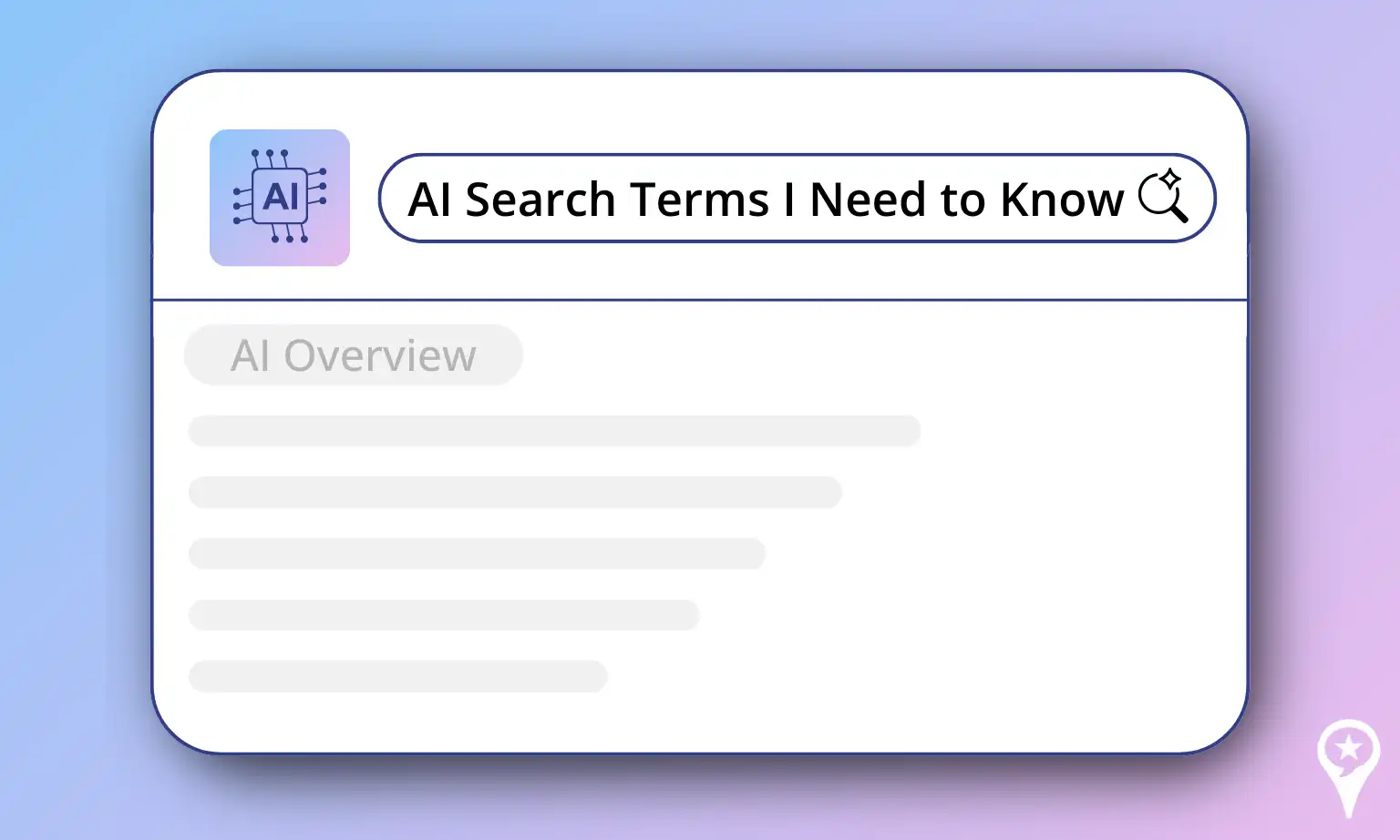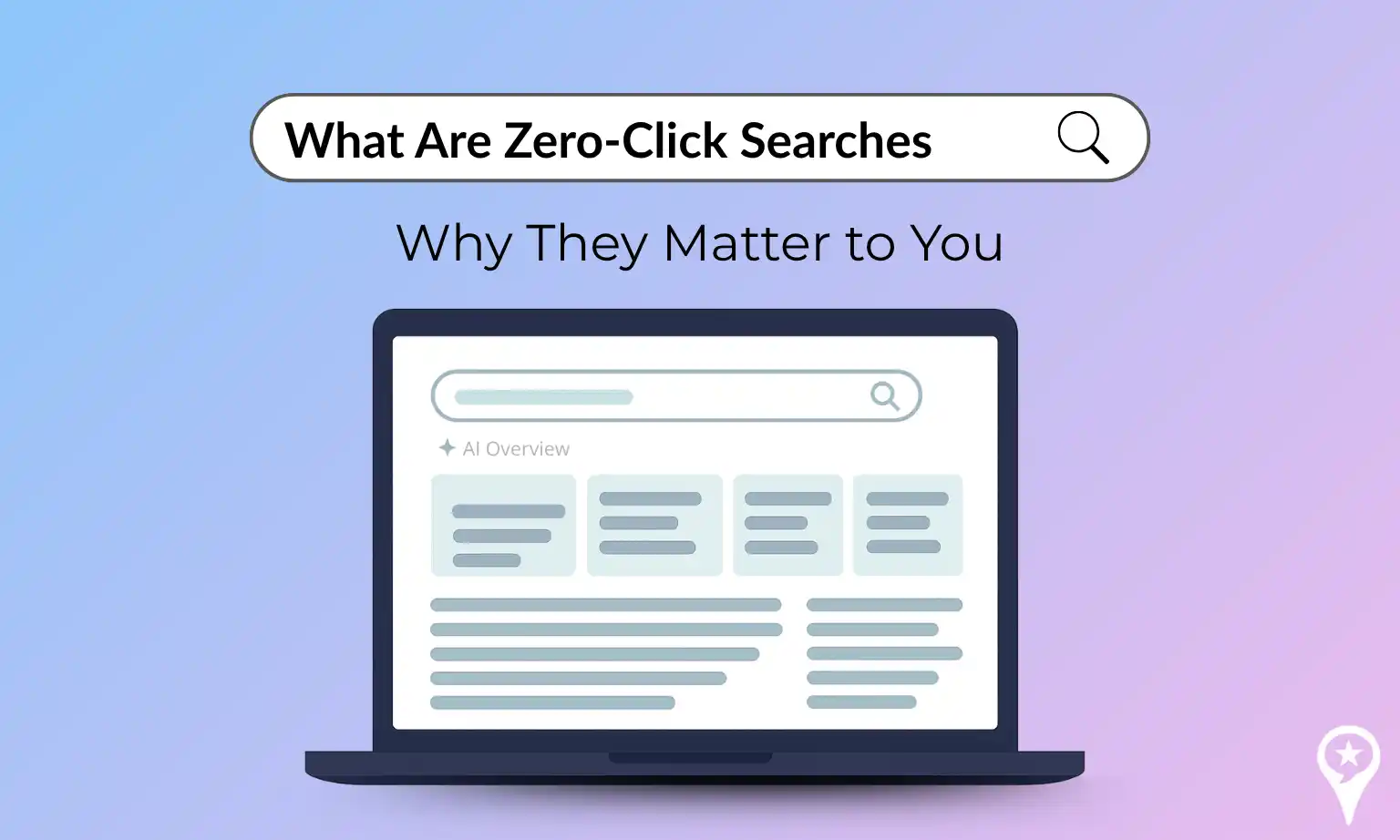In the last five years, ReviewInc conducted several studies of over 15,000 U.S. Consumers asking what they seek out most before selecting a business, service or product. Now, with five years of data, the answer is clear: Review Sites are the most critical to the purchase decision and by far the best advertising channel.
The study asked consumers to provide only one answer to the following simple question:
When choosing a service or professional (such as a doctor, mechanic, plumber, attorney, etc.) what is most important?
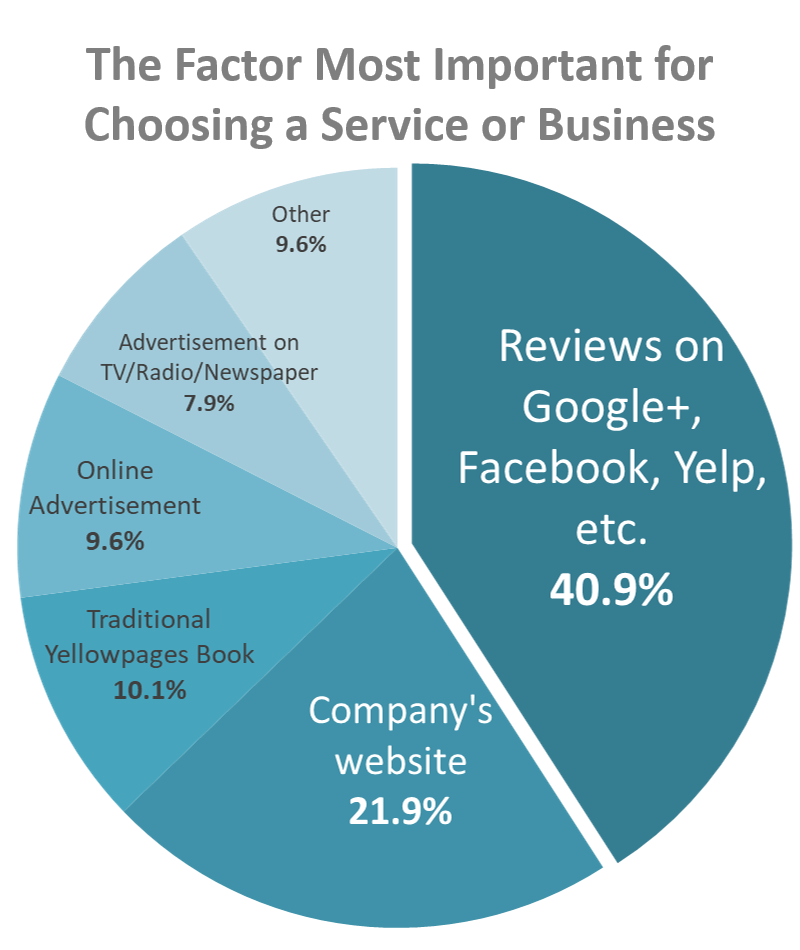
Each respondent was provided with a multiple choice list from which they could only choose one answer. While multiple answers could have been allowed, ReviewInc wanted a more discerning answer so that it could pinpoint what was most influential to the consumer. This method has been applied to all the surveys form 2013 through 2018.
The Five Year Trend
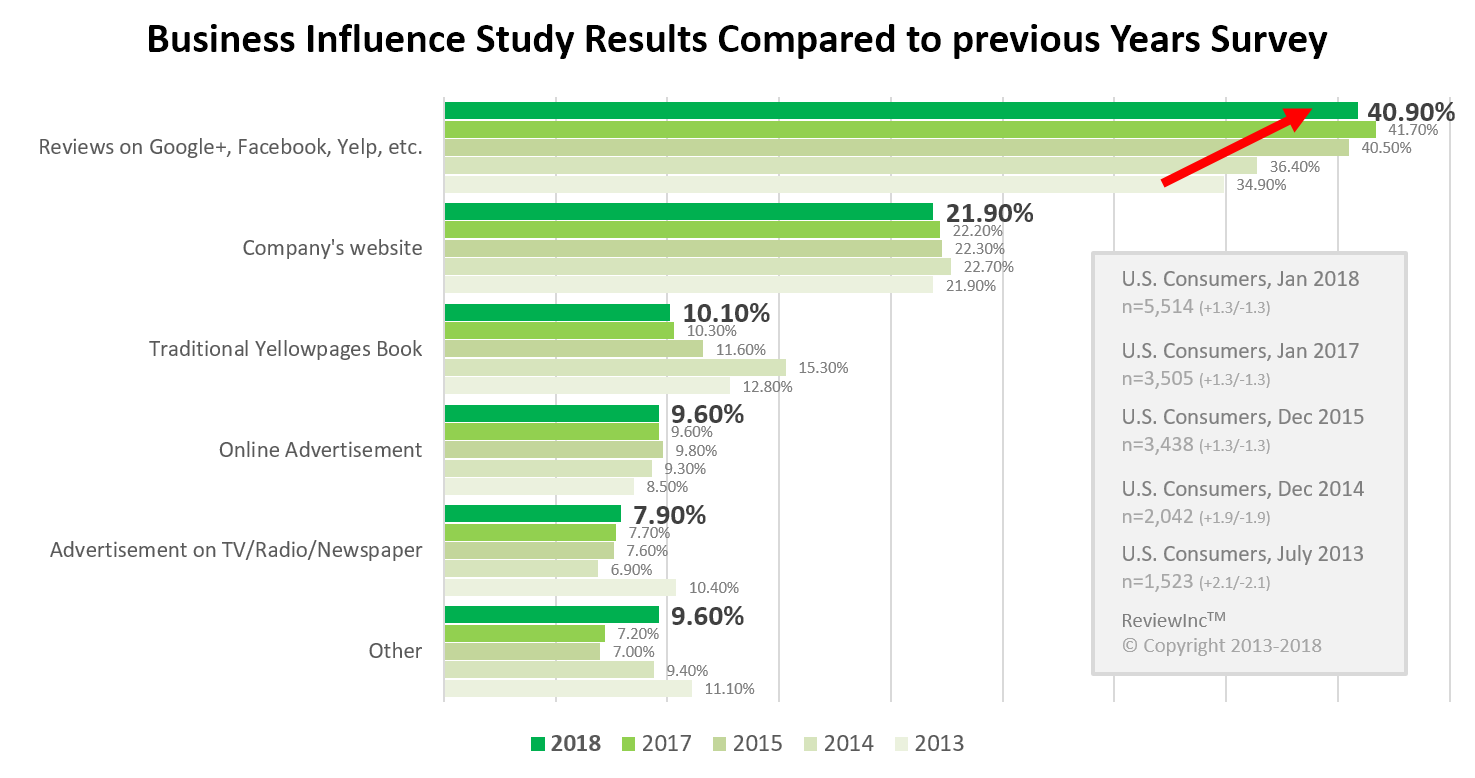
In this year’s result, Review Sites again topped the list for the most influential component. This is followed by a company’s website (as in previous years). What was more interesting was the year over year trend. The importance of review sites continued to increase by a factor of over 19% from 2014. The company website‘s influence remained steady within the margin of error which could account for the very slight decline. The influence of the traditional yellow pages continued declined, albeit slower than anticipated. Online advertising also appears to have remained stable compared to last year. The “Other” category gained the most presumably from the use of personal interactions on social media such as Facebook, Instagram and Snapchat.
Females Versus Males
In the last 3 years, females outpaced males in choosing review sites as their most influential source. This is beneficial for businesses engaged in reputation management as global spending by women is estimated to be a whopping $18 Trillion in 20181. Considering that females tend to spend more than males, businesses should pay closer attention to their reviews. More specifically, Baby Boomer women are undermarketed2 but spend the most time choosing to look at review sites, an undeveloped “gold mine” for businesses maintaining their reputation online.
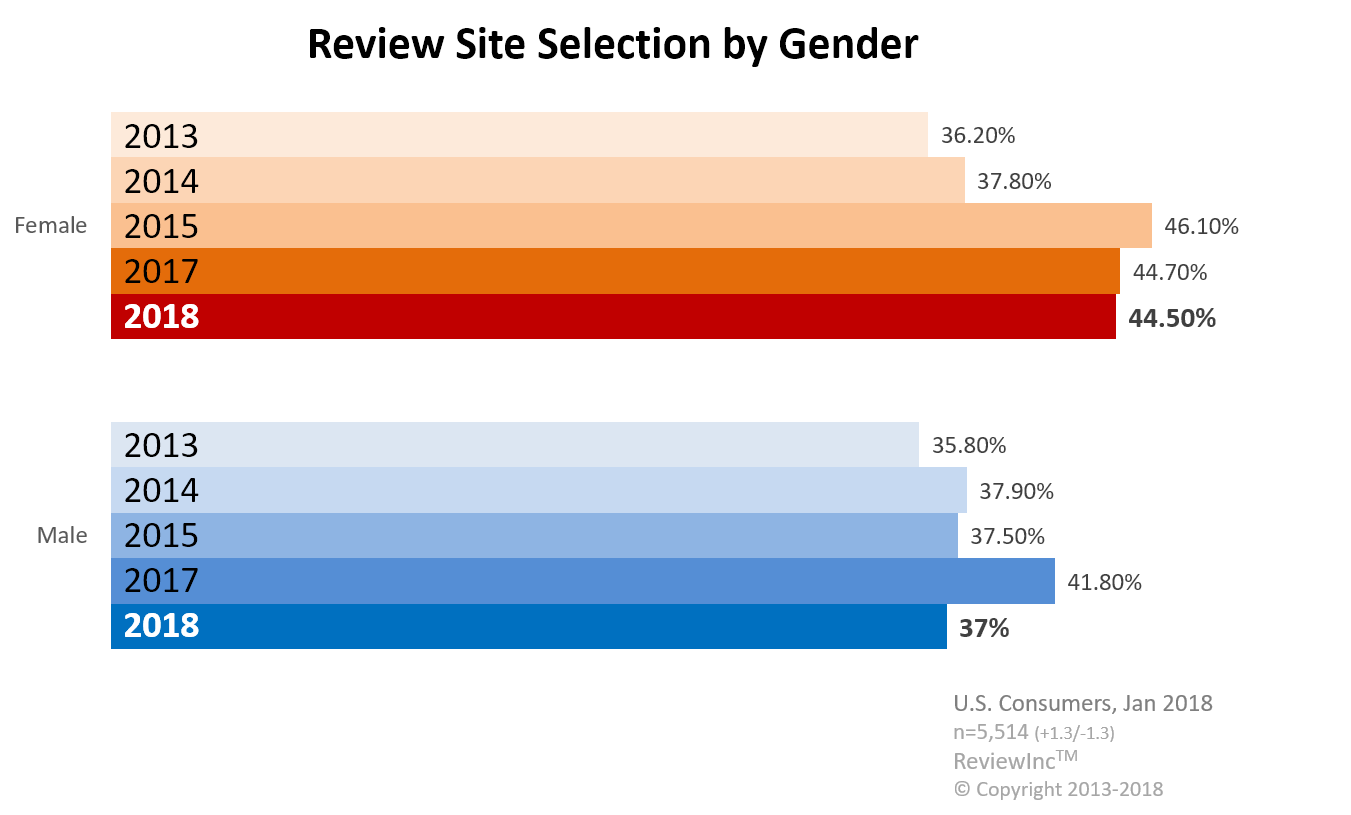
The Generation Gap
Some age groups displayed a significant increase in preference for Review Sites while other age groups decreased. Of particular interest was the more affluent generations (ages 45 and up) showed a significant increase in the choice of Review Sites.
The younger age groups exhibit a decline due to a variety of factors that created a different economic environment for a generation fairly recent to adulthood. While the younger portion of the millennial generation is still paying for education, the older part of the generation is still in debt; while spending increases with things like homes and starting family, the baby boom of 1987 placed the crux of Millennials in or just leaving university during the Great Recession (between 2008-2009).
What’s more is the amount and use of income has changed. According to Morgan Stanley3, from 2005 to 2012, the average amount of student debt has near doubled from over $13,000 to over $24,000, leaving the majority of a generation in debt. Previous generations had more disposable income, spending far more on dining and entertainment. Millennials and some of Generation X is still fighting their way through debt; according to Mother Jones6, Millennials spent only 81% of their income, a 10% decrease from the Reagan era.
As the younger generations are in fact more cautious about their spending, and may turn to social media and friends more than the review sites themselves. Long gone is the need for linear marketing techniques. What newer generations want is a conversation, and review sites built by Generation X and Millennials alike have to find a way to meet this new need for engagement. This is especially the case as the Millennial generation reaches their peak consumption years. This underscores the importance of Responding to Reviews on popular sites such as Google Maps and Facebook.
The Older Generations
While Millennials and Gen-Xers are in their peak consumption years, According to AARP’s Venture Capital Review4, Baby Boomers (ages 53 and over) by far spend the most across all product categories, and their spending will only increase over the next 20 years due to retirement, health care, and their high discretionary income.
This is reflected in the age groups that choose reviews on review sites like Google Facebook, and Yelp. In great contrast to 2017, 2018 is illustrating that those over the age of 45 are more likely to use review sites than those under the age of 44. As 70 % of the disposable income5 is controlled by Baby Boomers and the older generations are choosing to spend their time on review sites, reputation management becomes an even more integral part of maintaining businesses both on and offline.
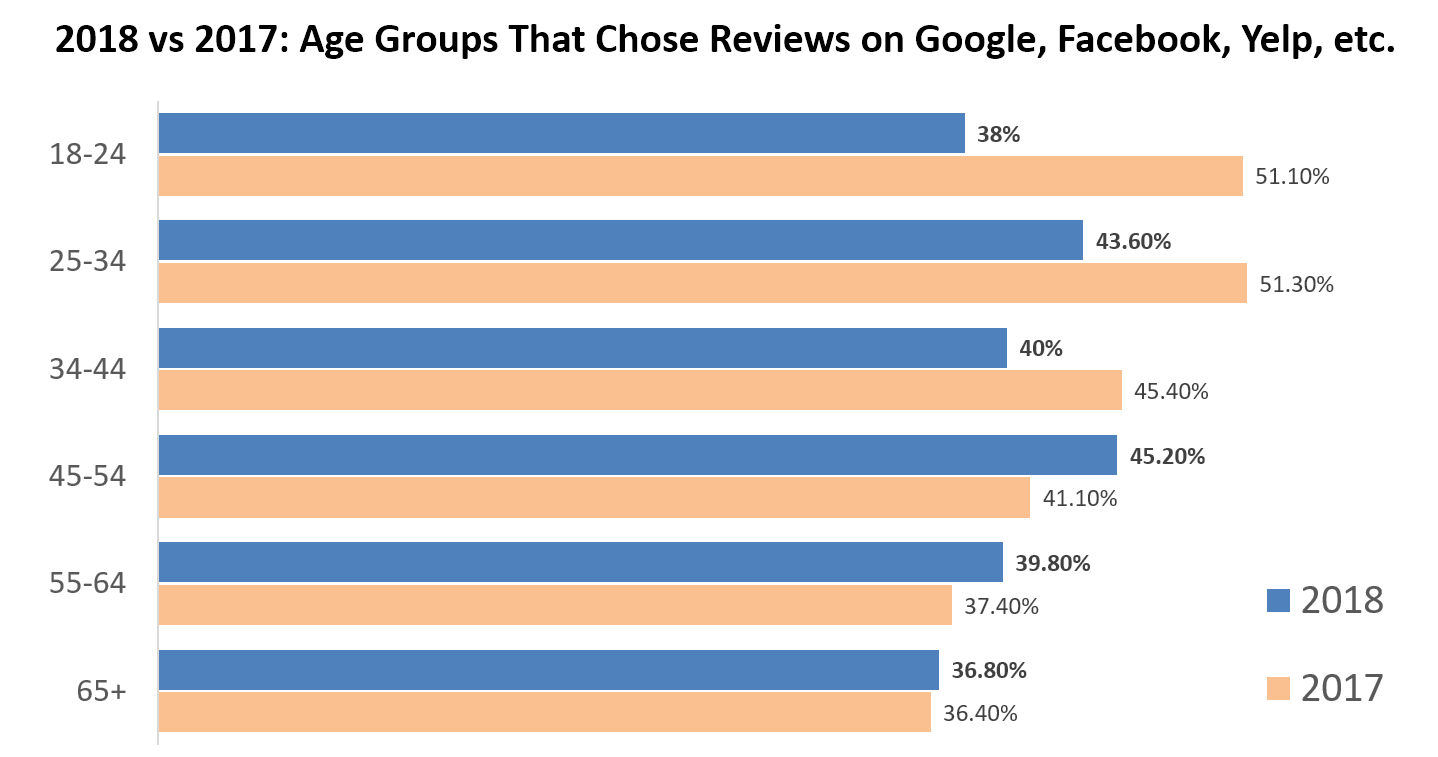
Decline of Yellow Pages
Speaking of the traditional yellow pages, we can readily observe the difference between this year’s survey results and those of 2014. Interest and preference in using the traditional yellow pages are down by around 40% from only three years ago. The decline is most apparent, again, in the older generations. Our only surprise here is that it is taking longer for the traditional paper-based Yellow Pages to decline in usage.
What’s the Takeaway?
- The importance and influence of Online Reviews is critical to your business (much more than your website)
- If you’re neglecting the investment in your online reputation, you could be missing out on big revenue growth opportunities.
- Make sure your reputation management solution integrates and leverages social media.
- Make sure to respond to reviews and create a “conversation” especially if you serve those under the age of 35.
Interested in a free consultation on how to improve your online reviews and overall reputation management? Give us a call at 877-973-8439 or email us at [email protected] to schedule a free, no-obligation consultation.
References
- Source: Forbes “Want A Piece Of The 18 Trillion Dollar Female Economy? Start With Gender Bias”
- Source: American Marketing Association “Baby Boomer Women Remain Invisible to Marketers”
- Source: Morgan Stanley “Generations Change How Spending is Trending”
- Source: AARP Venture Capital Review Issue 29
- Source: Nielson: Introducing Boomers, Marketing’s Most Valuable Generation
- Source: Mother Jones “What Do Millennials Spend All Their Money On?”


